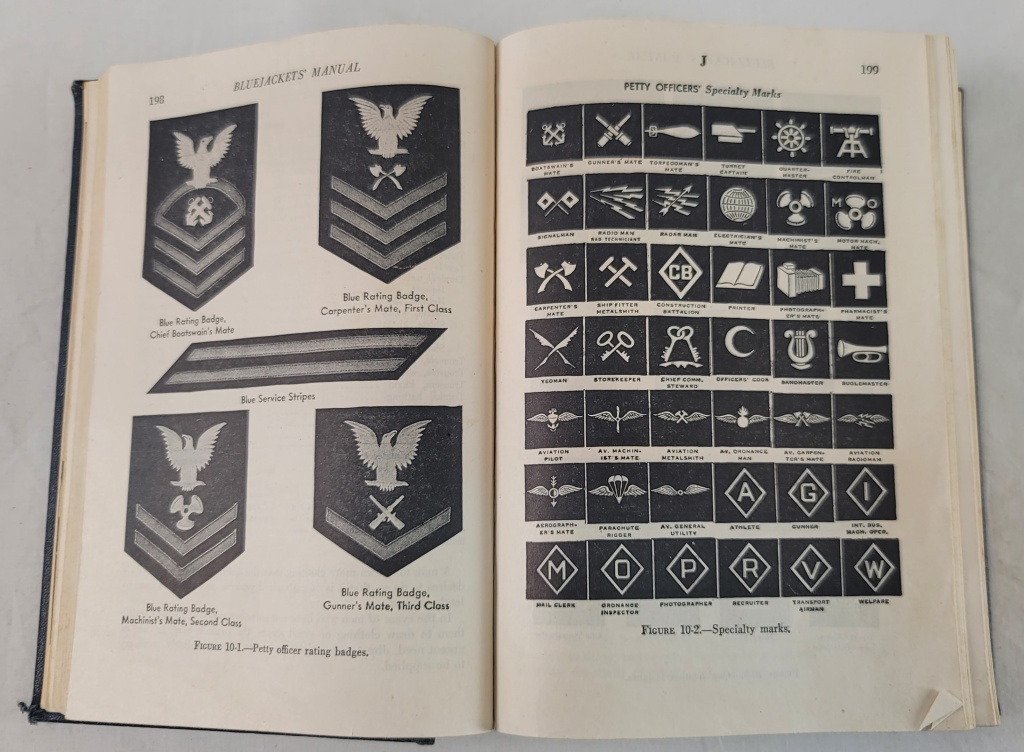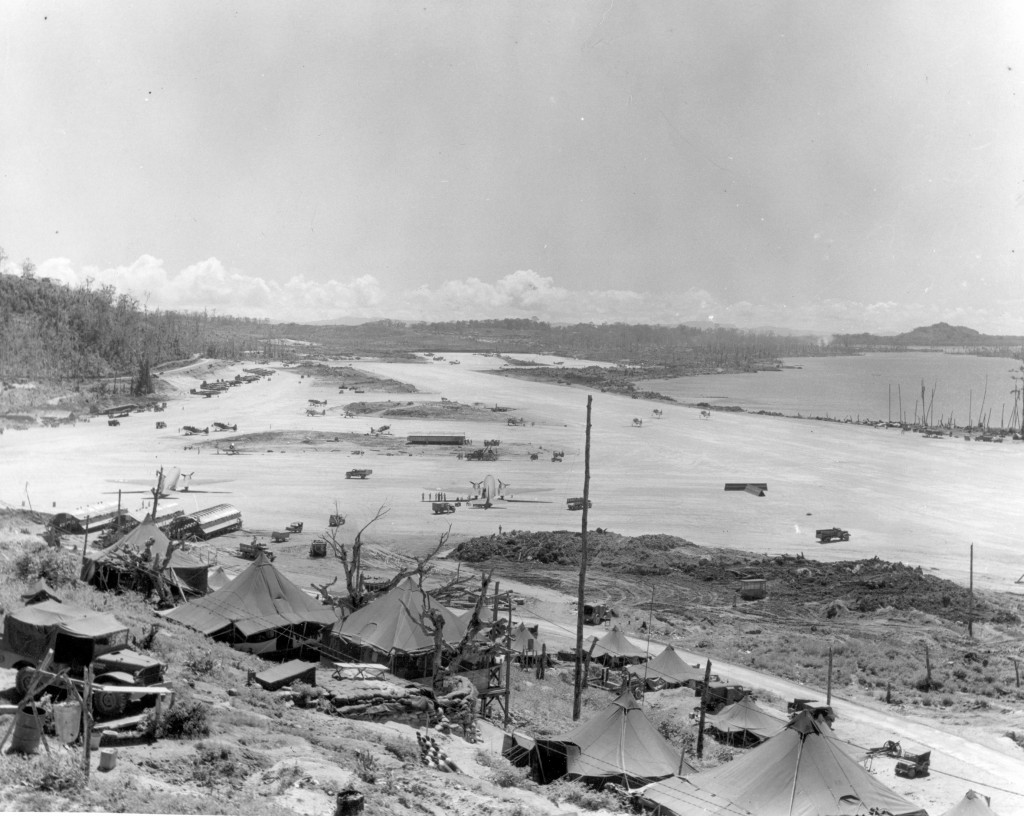The United States Naval Construction Force has had the distinct privilege of wearing its insignia on at least one type of official US Navy uniform almost every year since its inception in 1941. This is the first in a series of blogs tracing the history of the Seabee insignia on uniforms that will be available the 15th of each month.
When the Seabees were established as reserve units in December of 1941, Rear Admiral Ben Moreell wanted clarification on how the newly created construction battalions would be recognized within the US Navy. Bureau of Naval Personnel (BUPERS) quickly added a series of specialty marks in early WWII, one of which was the use of “CB” to denote construction battalions.

The Blue Jacket Manual 1943
11th Edition;
pages 198-199
This first mark was worn at the left sleeve cuff on both the winter and summer dress uniforms of enlisted personnel as well as the CPO khaki and gray uniform. The letters were block-style throughout their use.

There were four colors of specialty marks. On the winter dress blues, the mark was white on black. On the summer whites and khaki uniforms, the mark was black with the appropriate background. When the gray uniform worn by Chief Petty Officers was issued, it also had a black specialty mark. These specialty marks were most common between 1942 and 1943, but still seen on Seabee uniforms through 1947.


